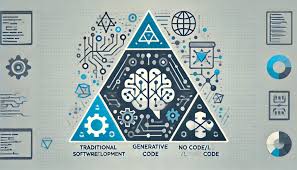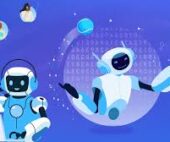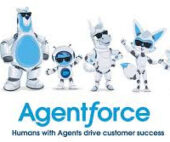Nowhere has the rise of generative AI tools been more transformative than in software development. It began with GitHub Copilot’s enhanced autocomplete, which then evolved into interactive, real-time coding assistants like Aider and Cursor that allow engineers to dictate changes and see them applied live in their editor. Today, platforms like Devin.ai aim even higher, aspiring to create autonomous software systems capable of interpreting feature requests or bug reports and delivering ready-to-review code.
At its core, the ambition of these AI tools mirrors the essence of software itself: to automate human work. Whether you were writing a script to automate CSV parsing in 2005 or leveraging AI today, the goal remains the same—offloading repetitive tasks to machines. What makes generative AI tools distinct, however, is their focus on automating the work of automation itself. Framing this as a guiding principle enables us to consider the broader challenges and opportunities generative AI brings to software development.
Automate the Process of Automation
The Doctor-Patient Strategy
Most contemporary generative AI tools operate under what can be called the Doctor-Patient strategy. In this model, the GenAI tool acts on a codebase as a distinct, external entity—much like a doctor treats a patient. The relationship is one-directional: the tool modifies the codebase based on given instructions but remains isolated from the architecture and decision-making processes within it.
Why This Strategy Dominates:
- Familiarity: Codebases have existed for decades, but using AI agents to modify them is a recent development. Naturally, initial tools have been designed to operate externally on existing systems.
- Business Model Clarity: This strategy provides a straightforward monetization path—vendors sell AI tools to developers, who apply them to their projects.
- Social Analogy: To non-developers, the Doctor-Patient model resembles the familiar relationship between users and developers—where one party requests a feature, and the other delivers it.
- Scalability Illusions: At small scales, this approach can yield impressive results, leading to the misconception that scaling these tools will automatically improve performance.
However, the limitations of this strategy are becoming increasingly apparent. Over time, the unidirectional relationship leads to bot rot—the gradual degradation of code quality due to poorly contextualized, repetitive, or inconsistent changes made by generative AI.
Understanding Bot Rot
Bot rot occurs when AI tools repeatedly make changes without accounting for the macro-level architecture of a codebase. These tools rely on localized context, often drawing from semantically similar code snippets, but lack the insight needed to preserve or enhance the overarching structure.
Symptoms of Bot Rot:
- Duplicated and conflicting business logic
- Generic, non-descriptive module and variable names
- Bloated codebases filled with dead code and boilerplate
- Collisions among singletons like loggers, configurations, and settings objects
- Increased reliance on AI for fixes, accelerating further degradation
Example:
Consider a Python application that parses TPS report IDs. Without architectural insight, a code bot may generate redundant parsing methods across multiple modules rather than abstracting the logic into a centralized model. Over time, this duplication compounds, creating a chaotic and inefficient codebase.
A New Approach: Generative-Driven Development (GDD)
To address the flaws of the Doctor-Patient strategy, we propose Generative-Driven Development (GDD), a paradigm where the codebase itself is designed to enable generative AI to enhance automation iteratively and sustainably.
Pillars of GDD:
- Write Code That Is Highly GenAI-Able
- Use unique, descriptive naming conventions to reduce context collisions.
- Maintain clear abstractions to simplify embedding and retrieval processes.
- Ensure documentation is comprehensive, granular, and aligned with the codebase.
- Follow consistent architectural patterns to support predictable generations.
- Emphasize DRY (Don’t Repeat Yourself) principles to minimize duplication and noise.
- Embed Automation into the Software Itself
- Like test frameworks (e.g., Pytest, JUnit), GDD requires tools that are integral to the development process. These tools should actively manage a meta-catalog of the project’s architecture, enabling AI to generate changes with a deeper understanding of the system.
- Treat Architecture as a First-Class Citizen
- GDD emphasizes continuous refactoring to maintain a clean, modular, and scalable architecture. This reduces cognitive load for humans and AI, allowing both to work more effectively.
How GDD Improves the Development Lifecycle
Under GDD, the traditional Test-Driven Development (TDD) cycle (red, green, refactor) evolves to integrate AI processes:
- Red: Define clear goals and constraints for generative AI to follow.
- Green: Allow AI to implement the initial solution within defined boundaries.
- Refactor: Leverage AI to align the solution with the codebase’s architecture, guided by an embedded meta-catalog.
This complete cycle eliminates the gaps present in current generative workflows, reducing bot rot and enabling sustainable automation. Over time, GDD-based codebases become easier to maintain and automate, reducing error rates and cycle times.
A Day in the Life of a GDD Engineer
Imagine a GDD-enabled workflow for a developer tasked with updating TPS report parsing:
- The engineer creates a new feature branch and initializes the task using a GDD tool (e.g.,
py-gdd):bashCopy codegit checkout -b feature/TPS-122/id-underscores && py-gdd begin TPS-122 - The GDD tool reviews the task, analyzes the codebase’s architecture, and generates a step-by-step plan:
- Parameterize tests to account for new ID formats.
- Abstract existing parsing logic into a centralized TPS model.
- Update all references to use the new abstraction.
- After reviewing the plan, the engineer approves execution. The GDD tool:
- Updates tests and ensures only the new ones fail.
- Refactors the code to introduce the TPS model.
- Ensures all tests pass, completing the feature with minimal intervention.
By embedding AI into the development process, GDD empowers engineers to focus on high-level decision-making while ensuring the automation process remains sustainable and aligned with architectural goals.
Conclusion
Generative-Driven Development represents a significant shift in how we approach software development. By prioritizing architecture, embedding automation into the software itself, and writing GenAI-optimized code, GDD offers a sustainable path to achieving the ultimate goal: automating the process of automation. As AI continues to reshape the industry, adopting GDD will be critical to harnessing its full potential while avoiding the pitfalls of bot rot.













